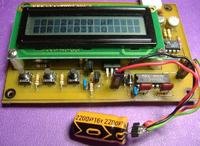vsmGuy
Advanced Member level 2
Ruslan_Windrivers said:decko_od_cokolade said:Can someone build rcl metar like this lc?
I have built this meter (which is improved version of the one you mentioned).
It doesn't have ESR function yet, though, but it is coming pretty soon as this project is very much alive and well-supported by the author...
Demo Video: https://www.youtube.com/watch?v=e338Rx4RDh8&feature=player_embedded
Where is this meter documented?
